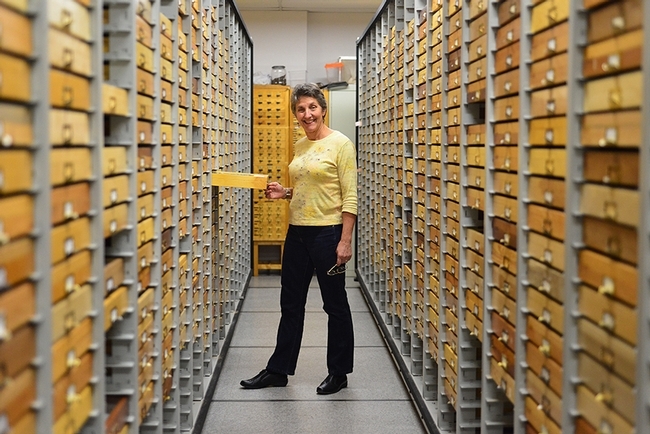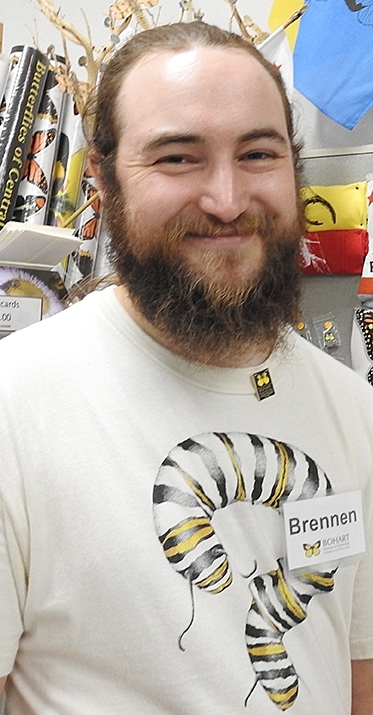- Author: Kathy Keatley Garvey
The Bohart Museum of Entomology recently hosted an evening open house to engage and inform UC Davis Department of Entomology and Nematology biologists on how to streamline their efforts at all stages of their research, from collecting insects and arachnids to using the Bohart specimens.
More than two dozen scientists, including UC Davis undergraduates, graduate students, postdoctoral scholars, researchers, associates and faculty, attended. They gathered information on:
- Making wet, dry or cryo collections
- Donating, borrowing or sampling museum specimens from the Bohart or from collections around the world
- Prepare specimens and formatting labels
- Field collecting (equipment, permits, storing, regionally and internationally)
- Identifications services
- Language for grants, and budget development
- Science communication: public outreach, and broader impacts
UC Davis distinguished professor Lynn Kimsey, director of the Bohart Museum, led the event. Entomologist Jeff Smith, who curates the lepidoptera collection, offered a pinning demonstration. (See one of his previous videos.) Others assisting were other Bohart staff and associates, including the laboratory of arachnologist Jason Bond, the Evert and Marion Schlinger Endowed Chair, UC Davis Department of Entomology and Nematology, and associate dean, UC Davis College of Agricultural and Environmental Sciences.
The Bohart Museum has an online playlist of 11 short videos on "How to Make an Insect Collection." It was the brainchild of UC Davis distinguished professor James R. Carey, who led a class of entomology students 13 years ago to create tightly scripted clips, with an emphasis on brevity, simplicity and low cost.
The entire series can be viewed in less than 10 minutes. The clips range in length from 32 seconds to 77 seconds. UC Davis forensic entomologist Robert Kimsey provided the introductory narration for each clip. See Bohart web page for more information on insect collecting and links to the videos.
- Hand Collecting
- Using an Aspirator
- Ground Collecting
- Aquatic Collecting
- Using Nets
- How to Kill Insects
- Pinning
- How to Point Mount
- Labeling
- Spreading
- Storage and Display
The Bohart Museum, founded in 1946, houses a global collection of eight million insect specimens. The insect museum is open to the public Mondays through Thursdays, from 8 a.m. to noon, and from 1 to 5 p.m. For more information contact bmuseum@ucdavis.edu or telephone (530) 752-0493.
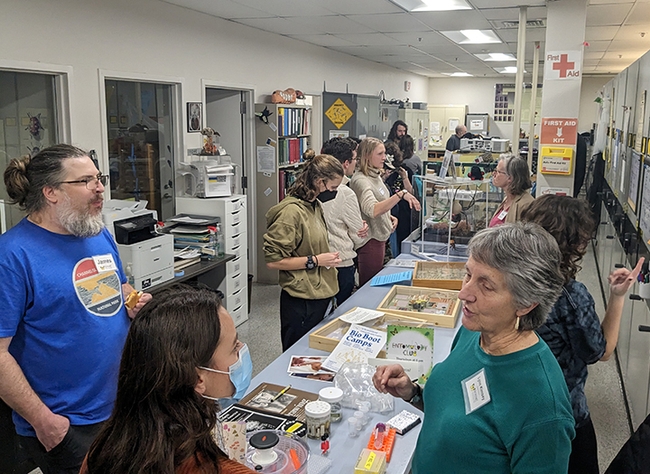
- Author: Kathy Keatley Garvey

The open house, themed "Social Wasps," is free and family friendly. Parking is also free.
Kimsey defines social wasps as "wasps that live together and cooperate in a colony, with female workers and a queen; only the queen has babies."
What drew her to study social wasps? "I just like stinging things in general and their anatomy and social behavior are really interesting."
Kimsey lists some of the common myths about social wasps as:
- They are often seen as malevolent beings out to get you and will chase you
- That they serve no purpose except to annoy us
- If you're allergic to bee stings you'll be allergic to wasp stings
- A copper penny place on a sting will make it go away
The public should know that social wasps "provide valuable ecosystem services; do pest control, and assist in nutrient recycling and pollination," she said.
"There are about 2,000 described species of social wasps worldwide," Kimsey said, and probably around 500 species undescribed.
The Bohart Museum has approximately 50,000 vespids in its collection, "and clearly the most popular is the Northern giant hornet, Vespa mandarinia," she said. The press dubbed it "Murder hornet." The Entomological Society of America recently changed its common name, "the Asian giant hornet," to "northern giant hornet."
The hornet, considered the world's largest hornet, is native to Asia. It was first detected in the Pacific Northwest in 2019, and with nests found in 2021.
Kimsey is a recognized authority on insect biodiversity, systematics and biogeography of parasitic wasps, urban entomology, civil forensic entomology, and arthropod-related industrial hygiene. She holds bachelor and doctoral degrees from UC Davis. She joined UC Davis entomology faculty in 1989, and has served as director of the Bohart Museum since 1990.
She plans to retire this year, but not from research and public service.
Kimsey served as president of the International Society of Hymenopterists from 2002-2004, and as a member of the board of directors of the Natural Science Collections Alliance in 2000 and 2001. The Pacific Branch, Entomological Society of Ameica (PBESA) singled her out for its highest honor, the C. W. Woodworth Award, in 2020. She received the PBESA Systematics, Evolution, and Biodiversity Award in 2014 and was a member of 'The Bee Team' that won the PBESA Outstanding Team Award in 2013. The UC Davis Academic Senate honored her with its Distinguished Scholarly Public Service Award in 2016 in recognition of her outstanding work. She received the UC Davis College of Agricultural and Environmental Sciences (CA&ES) Exceptional Faculty Award in 2023.
The Bohart Museum also houses a live "petting zoo" (Madagascar hissing cockroaches, stick insects, tarantulas and more), and an insect-themed gift shop.
For more information, contact the Bohart Museum at bmuseum@ucdavis.edu or access the website at https://bohart.ucdavis.edu
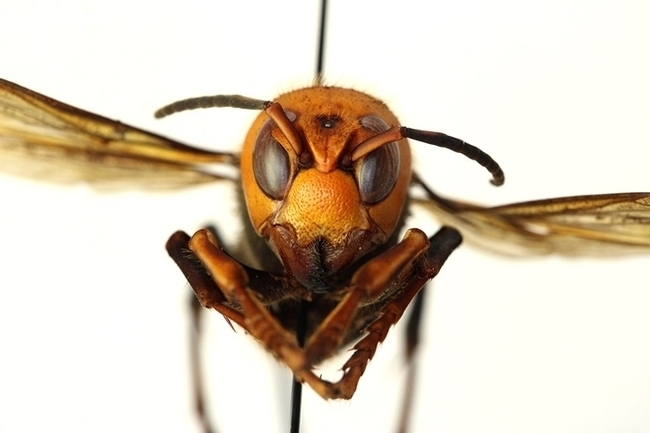
- Author: Kathy Keatley Garvey
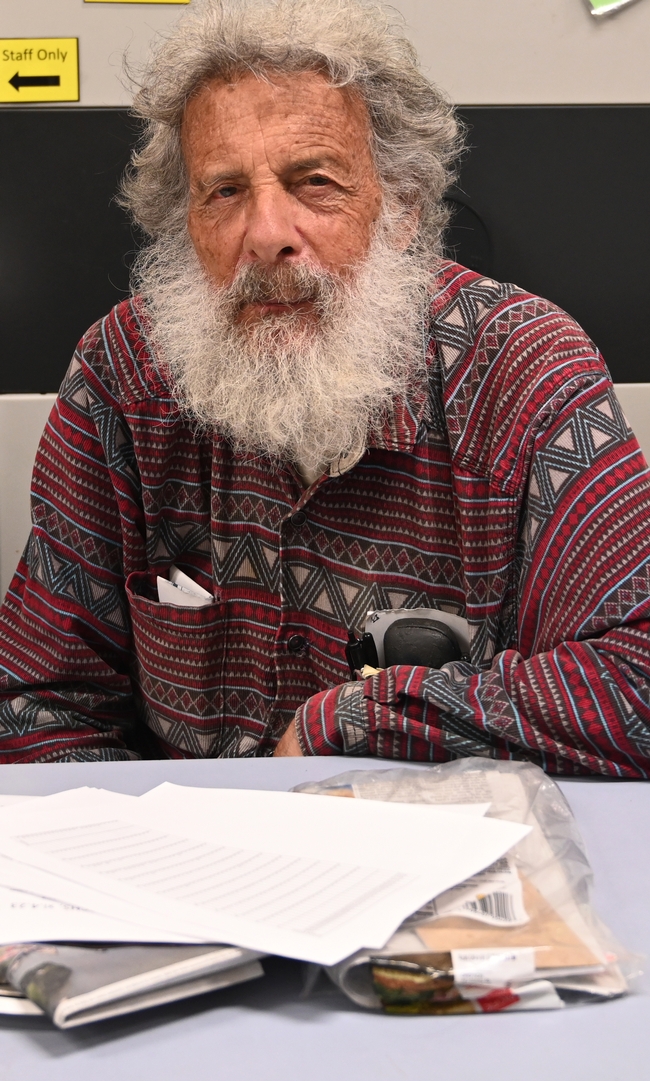
Beginning Jan. 1, 2024, Shapiro will be collaborating with the Bohart Museum of Entomology, the "dropping off point," for the Pieris rapae entries. Bohart curator and collections manager Brennen Dyer will be accepting the entries.
Shapiro launched the contest in 1972 as part of his scientific research to determine the first flight of the year in the three-county area. His research involves long-term studies of butterfly life cycles and climate change.
The contest begins at 12:01 Jan. 1. The prize is either a beer or an equivalent.
Shapiro says P. rapae is emerging earlier and earlier as the regional climate has warmed. "Since 1972, the first flight of the cabbage white butterfly has varied from Jan. 1 to Feb. 22, averaging about Jan. 20."
Shapiro, who maintains a research website at http://butterfly.ucdavis.edu/, says the point of the contest "is to get the earliest possible flight date for statistical purposes. The rules require that the animal be captured and brought in alive to be verified. That way no one can falsely claim to have seen one or misidentify something else as a cabbage white."
The contest rules include:
- It must be an adult (no caterpillars or pupae) and be captured outdoors.
- It must be brought in alive to the Bohart Museum of Entomology, located in Room 1124, Academic Surge Building, 455 Crocker Lane, UC Davis campus, during work hours, from 8 a.m. to noon, and from 1 to 5 p.m., Monday through Friday. It must include full data (exact time, date and location of the capture) and the contact information of the collector (address, phone number and/or e-mail.) Brennen Dyer will certify that it is alive and refrigerate it. (If it's collected on a weekend or holiday, it can be kept in the refrigerator for a few days--do not freeze it, Shapiro says.)
- Shapiro is the sole judge.
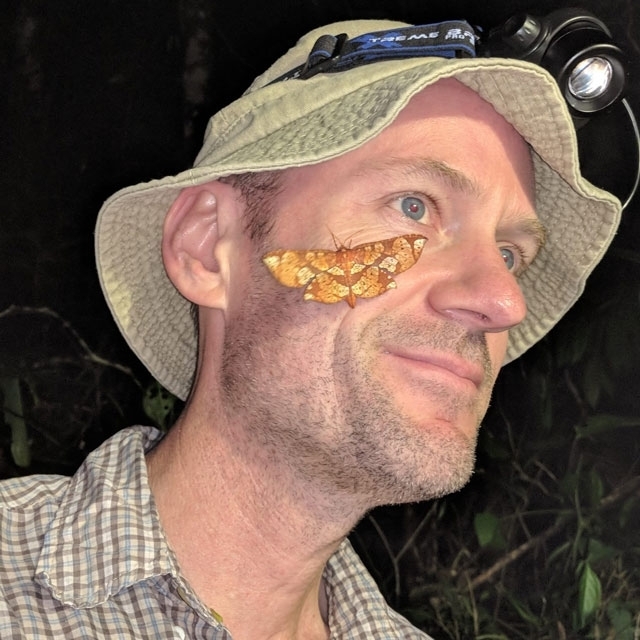
Feb 8 was "the 11th latest first rapae day since 1972,” he said, detailing the 10 later finds: Feb. 26, 1972 (“which is probably too late, since I hadn't yet learned where to look for them first!”); Feb. 22, 1992 (“I fully believe that one”); Feb. 18, 1978 and 1986; Feb. 17, 1979; Feb. 16, 1975; Feb. 14, 1981; Feb. 13, 1983 and 1985; and Feb. 10, 1980. “Note that most of these are from the '80s,” he said. “There has indeed been a trend to earlier emergence, though this year is an outlier!”
Shapiro says P. rapae inhabits vacant lots, fields and gardens where its host plants, weedy mustards, grow. The male is white. The female is often slightly buffy; the "underside of the hindwing and apex of the forewing may be distinctly yellow and normally have a gray cast,” Shapiro said. “The black dots and apical spot on the upperside tend to be faint or even to disappear really early in the season.”
Shapiro, who monitors butterfly populations in the field for more than 200 days of the year, participates in his own contest. He has been defeated only four times and those were by UC Davis graduate students. Adam Porter won in 1983; Sherri Graves and Rick VanBuskirk each won in the late 1990s; and Jacob Montgomery in 2016. The first three were his own graduate students.
Shapiro nets many of the winners in mustard patches near railroad tracks in West Sacramento, Yolo County
Recent Beer-for-a-Butterfly Contest statistics:
- 2023: Art Shapiro recorded the first butterfly of the year at 11:22 a.m., Feb 8 in West Sacramento County, Yolo County. He did not collect the specimen and no one can forth with a winner.
- 2022: No official contest due to the COVID pandemic, but Shapiro recorded his first-of-the-year P. rapae at 1:25 p.m. on Jan. 19 in West Sacramento, Yolo County
- 2021: No official contest due to the COVID pandemic, but Shapiro collected his first-of-the-year at 1:55 p.m. Jan. 16 on the UC Davis campus, Yolo County
- 2020: Technically, no winner, as Shapiro did not collect the one he spotted in Winters, Yolo County at 11:16 a.m. on Jan. 30 at the Putah Creek Nature Park. "It flew back and forth across Putah Creek and then departed the area, flying out of reach above the trees," he noted. He waited around for 90 minutes to see if it would return. It did not.
- 2019: Shapiro collected the first cabbage white butterfly near the Suisun Yacht Club, Suisun City, Solano County, at 1:12 p.m., Friday, Jan. 25. "It was the earliest recorded in Suisun City in 47 seasons."
- 2018: Art Shapiro collected the winner in West Sacramento
- 2017: Jan. 19: Art Shapiro collected the winner on the UC Davis campus
- 2016: Jan. 16: Jacob Montgomery collected the winner in west Davis
- 2015: Jan. 26: Shapiro collected the winner in West Sacramento
- 2014: Jan. 14: Shapiro collected the winner in West Sacramento
- 2013: Jan. 21: Shapiro collected the winner in West Sacramento
- 2012: Jan. 8: Shapiro collected the winner in West Sacramento
- 2011: Jan. 31: Shapiro collected the winner in Suisun
- 2010: Jan. 27: Shapiro collected the winner in West Sacramento
A fellow of the American Association for the Advancement of Science, the Royal Entomological Society and the California Academy of Sciences, Shapiro is the author of A Field Guide to Butterflies of the San Francisco Bay and Sacramento Valley Regions, illustrated by Tim Manolis and published in 2007 by the University of California Press.
Collaborating with Shapiro on butterfly research projects is Foundation Professor Matthew Forister, the Trevor J. McMinn Endowed Research Professor in Biology, University of Nevada. Forister received his doctorate from UC Davis, studying with Shapiro, his major professor.
Pest of Cole Crops. As a caterpillar, the insect is a pest of cole crops such as cabbage. UC Statewide Integrated Pest Management Program (UC IPM) says the cabbageworm is active throughout the year in California. "Cabbageworm larvae chew large, irregular holes in leaves, bore into heads, and drop greenish brown fecal pellets that may contaminate the marketed product. Seedlings may be damaged, but most losses are due to damage to marketed parts of the plant," according to the UC IPM website.
The Bohart Museum of Entomology is directed by UC Davis distinguished professor Lynn Kimsey. Entomologist Jeff Smith curates the Lepidoptera collection, a global collection of some 500,000 moths and butterflies.
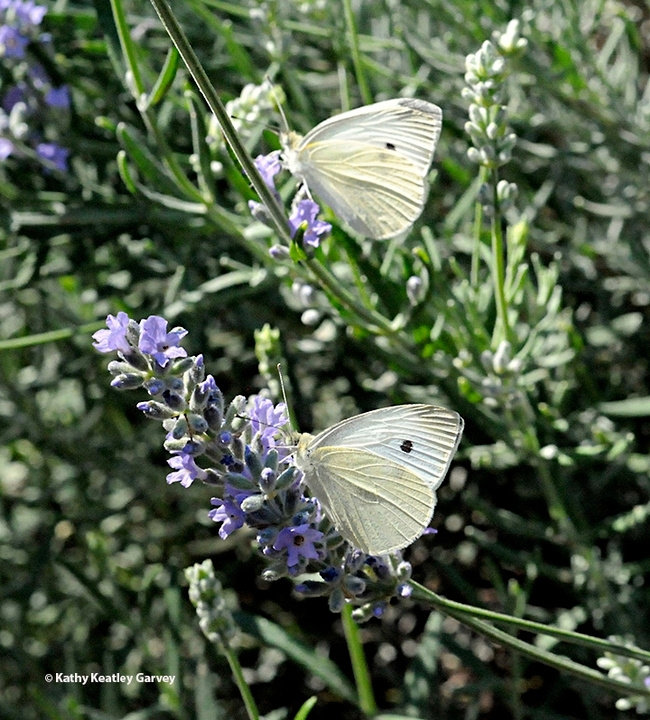
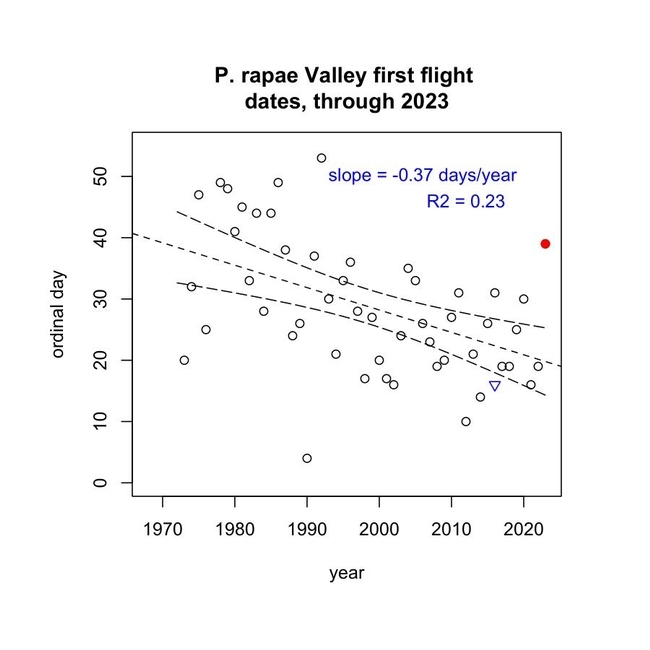
- Author: Kathy Keatley Garvey
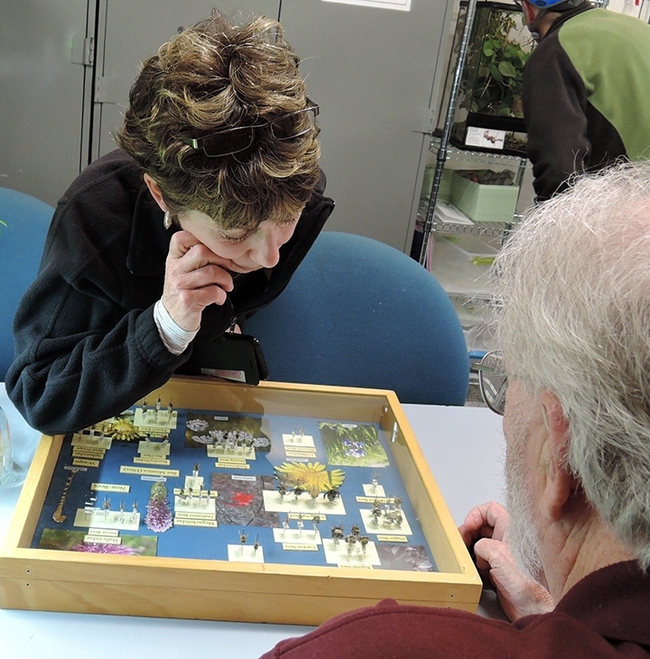
The Bohart Museum of Entomology is sponsoring its fourth annual Robbin Thorp Memorial First-Bumble Bee-of-the-Year Contest, which begins at 12:01, Jan. 1, 2024. The first person to photograph a bumble bee in either Yolo or Solano and email it to the sponsor, the Bohart Museum, will receive a coffee cup designed with the endangered Franklin's bumble bee, the bee that Thorp monitored on the California-Oregon border for decades.
Contest coordinator Lynn Kimsey, director of the Bohart Museum, said the image must be taken in the wild and emailed to bmuseum@ucdavis.edu, with the time, date and place.
The contest memorializes Professor Thorp (1933-2019), a global authority on bees and a UC Davis distinguished emeritus professor of entomology, who died June 7, 2019 at age 85. A 30-year member of the UC Davis faculty, he retired in 1994 but continued working until several weeks before his death. Every year he looked forward to seeing the first bumble bee in the area.
The 2023 winner was Ria deGrassi of Davis, who spotted and videoed a black-tailed bumble bee Bombus melanopygus, foraging on a prized ceanothus plant on Sunday afternoon, Jan. 8 in her backyard in Davis.
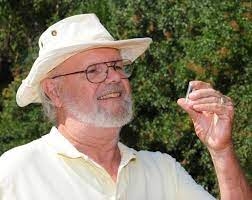
“I was doing clean-up in my backyard after Saturday night's rain and a 50-plus mile-per-hour windstorm,” said de Grassi, now an agricultural policy consultant. “The wind had subsided to a breeze by then. As I walked past my Ray Hartman ceanothus—which I purchased from a UC Davis Arboretum plant sale years ago when I did a garden makeover to be pollinator-friendly—I noticed some extra-long ceanothus branches that needed to be pruned, including some with super-early blooming flowers.”
“I fumbled to retrieve my cell phone from my pocket to record, just to get in on the fun,” said de Grassi. “These bumbles dart around a lot, they don't stay put for photo ops.”
De Grassi knew Thorp from her professional work with the California Farm Bureau Federation and from her friendship with bee scientists Timothy Lawrence and Susan Cobey, formerly of UC Davis.
DeGrassi, a former director of federal policy, livestock, animal health and welfare for the California Farm Bureau Federation, credits the storm, the UC Davis Arboretum and Public Garden and her working relationships with bee scientists, including Thorp, as having a hand in either her find and/or her interest in plants and pollinators.
The three previous winners (2022 was a tie) each photographed a bumble bee in the 100-acre UC Davis Arboretum. Coincidentally, de Grassi bought her prized ceanothus at an Arboretum plant sale.
Postdoctoral researcher Charlie Casey Nicholson of the Neal Williams lab and the Elina Lastro Niño lab, UC Davis Department of Entomology and Nematology, won the 2021 contest by photographing a B. melanopygus at 3:10 p.m., Jan. 14 in a manzanita patch in the Arboretum.
UC Davis doctoral candidate Maureen Page of the Neal Williams lab and horticulturist Ellen Zagory, retired director of public horticulture for the Arboretum, tied for first in the 2022 contest by each photographing a bumble bee foraging on manzanita (Arctostaphylos) in the Arboretum at 2:30 p.m., Saturday, Jan. 1.
Page, who now holds a doctorate in entomology, photographed a B. melanopygus, while Zagory captured an image of the yellow-faced bumble bee, Bombus vosnesenskii.
Thorp, a tireless advocate of pollinator species protection and conservation, co-authored two books in 2014, during his retirement: Bumble Bees of North America: An Identification Guide (Princeton University,) and California Bees and Blooms: A Guide for Gardeners and Naturalists (Heyday). Every year he looked forward to finding or seeing the first bumble bee in the area.
Thorp co-taught The Bee Course from 2002 to 2019. An intensive nine-day workshop affiliated with the American Museum of Natural History and held annually at the Southwestern Research Station, Portal, Ariz., it draws participants from around the world, includkng conservation biologists, pollination ecologists, and other biologists who want to gain greater knowledge of the systematics and biology of bees.
For years, Thorp monitored Franklin's bumble bee, found only in a small range in Southern Oregon and Northern California, and now feared extinct. He last spotted it in 2006.
The bumble bee contest originated in 2012 with the "Bombus posse" of Thorp, Allan Jones, Gary Zamzow, Kim Chacon and Kathy Keatley Garvey, who engaged in a friendly contest to see who could find the first bumble bee of the year in the two-county area. The first bumble bee to emerge in the area is usually the black-tailed bumble bee. B. melanopygus, Thorp used to say. Another early bumble bee is the yellow-faced bumble bee, B. vosnesenskii.
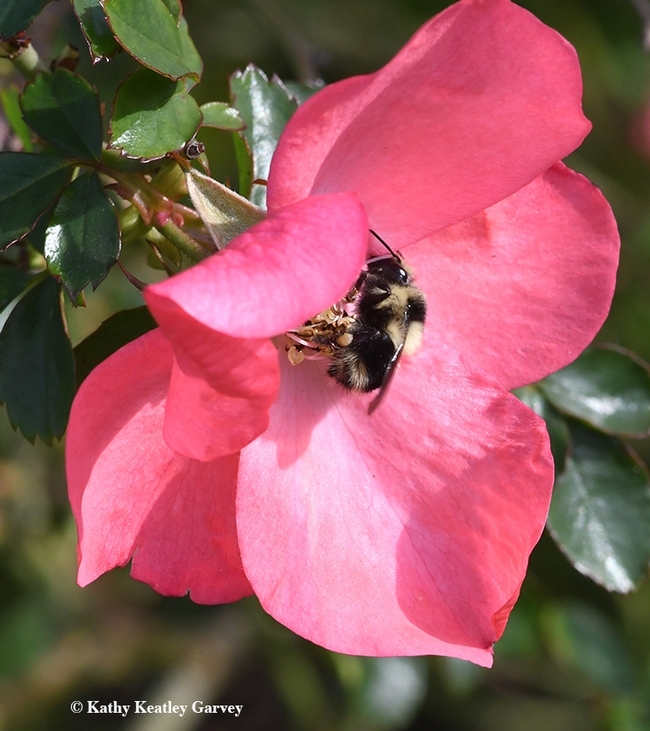
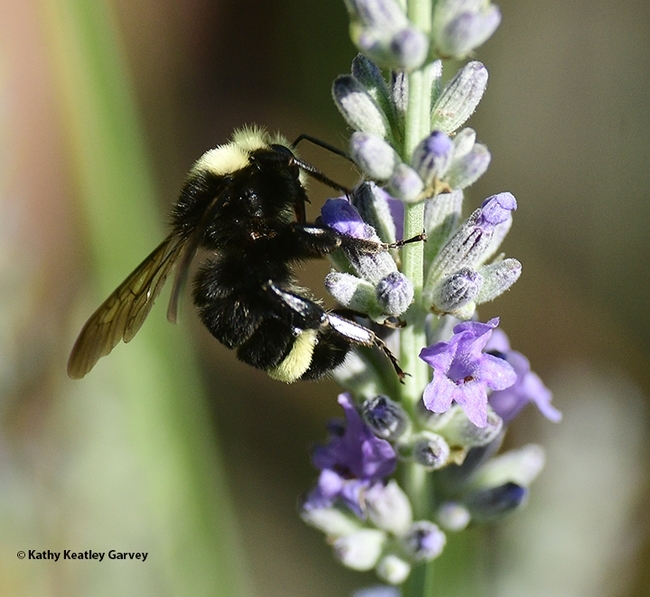
- Author: Kathy Keatley Garvey

The schedule:
Saturday, Jan. 20:
"Social Wasps," 1 to 4 p.m., featuring UC Davis distinguished professor Lynn Kimsey, director of the Bohart Museum. She recently received the 2023 Exceptional Faculty Award from the College of Agricultural and Environmental Sciences. Kimsey, a recognized authority on insect biodiversity, systematics and biogeography of parasitic wasps, urban entomology, civil forensic entomology, and arthropod-related industrial hygiene, is a 34-year member of the UC Davis entomology faculty. She has directed the Bohart Museum since 1990. She plans to retire in 2024. (See news story)
Saturday, Feb. 10:
13th Annual Biodiversity Museum Day, all day. Last year 13 UC Davis museums or collections participated: Arboretum and Public Garden, Bohart Museum of Entomology, Botanical Conservatory. California Raptor Center. Center for Plant Diversity, Department of Anthropology Museum, Marine Invertebrate Collection, Museum of Wildlife and Fish Biology, Nematode Collection, Department of Earth and Planetary Sciences Paleontology Collection, and Phaff Yeast Culture Collection.
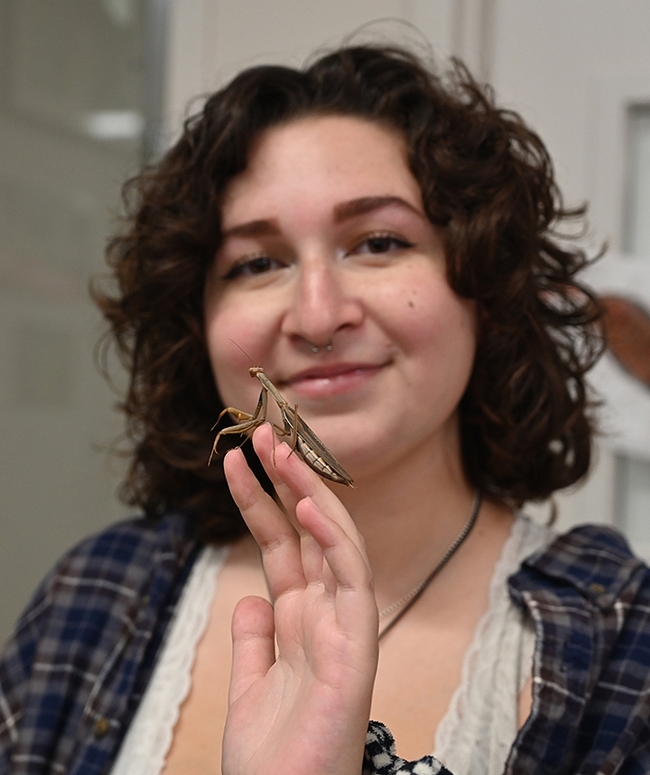
"Grasshoppers, Crickets and Katydids." Talk and a question-and-answer forum from 1 to 2 p.m. Open museum, 2 to 4 p.m. Heading the event is UC Davis undergraduate student Sol Wantz, a senior majoring in entomology and a member o the lab of community ecologist and professor Neal Williams. She serve as president of the UC Davis Entomology Club.

110th UC Davis Picnic Day, all day. This is billed as the largest student-run event in the country. It is UC Davis' annual open house with hundreds of free and family friendly events. Entomology displays, exhibits and activities planned by the Department of Entomology and Nematology will be at the Bohart Museum and at Briggs Hall.
Sunday, May 19:
"Bees: Both Wild and Managed," 1 to 4 p.m. Presenters will include community ecologist Rachel Vannette, associate professor and vice chair of the UC Davis Department of Entomology and Nematology.
The Bohart Museum, founded in 1946, is located in Room 1124 of the Academic Surge Building, 455 Crocker Lane, UC Davis campus. It houses a global collection of eight million insect specimens, plus a live petting zoo (including Madagascar hissing cockroaches, stick insects, and tarantulas) and a insect-themed gift shop, stocked with t-shirts, hoodies, jewelry, books, posters, pens, and more.
The Bohart Museum is open to the public Monday through Thursday. Casual walk-in hours are from 9 a.m. to noon and from 1 to 5 p.m. Pre-arranged tours (schools, scouts, UC classes) may also occur during these times. The museum will be closed for the winter holiday break, Dec. 23-Jan. 1. More information is on the website or by contacting bmuseum@ucdavis.edu. Tabatha Yang serves as the education and outreach coordinator, and Brennen Dyer as the collections manager.
